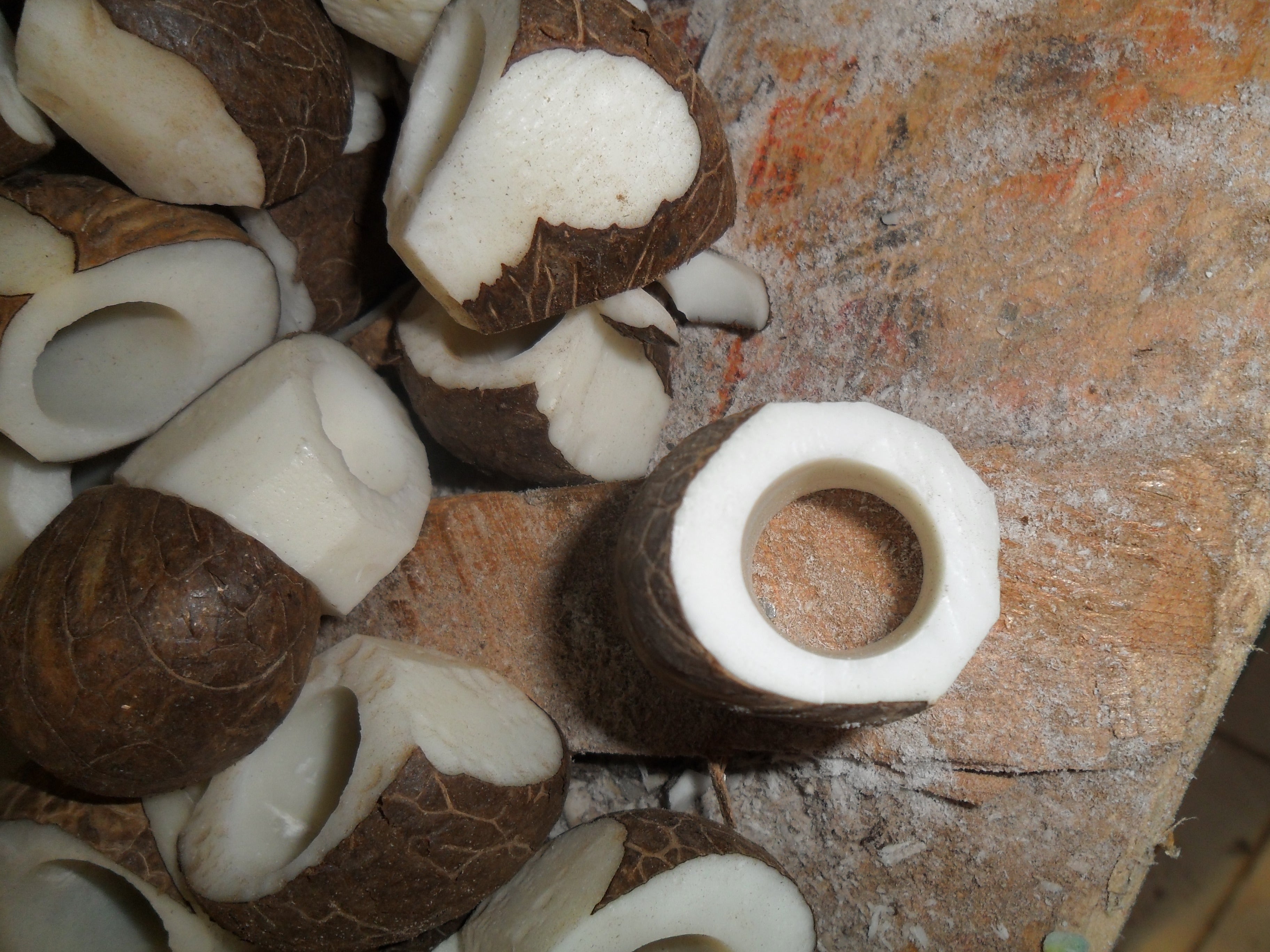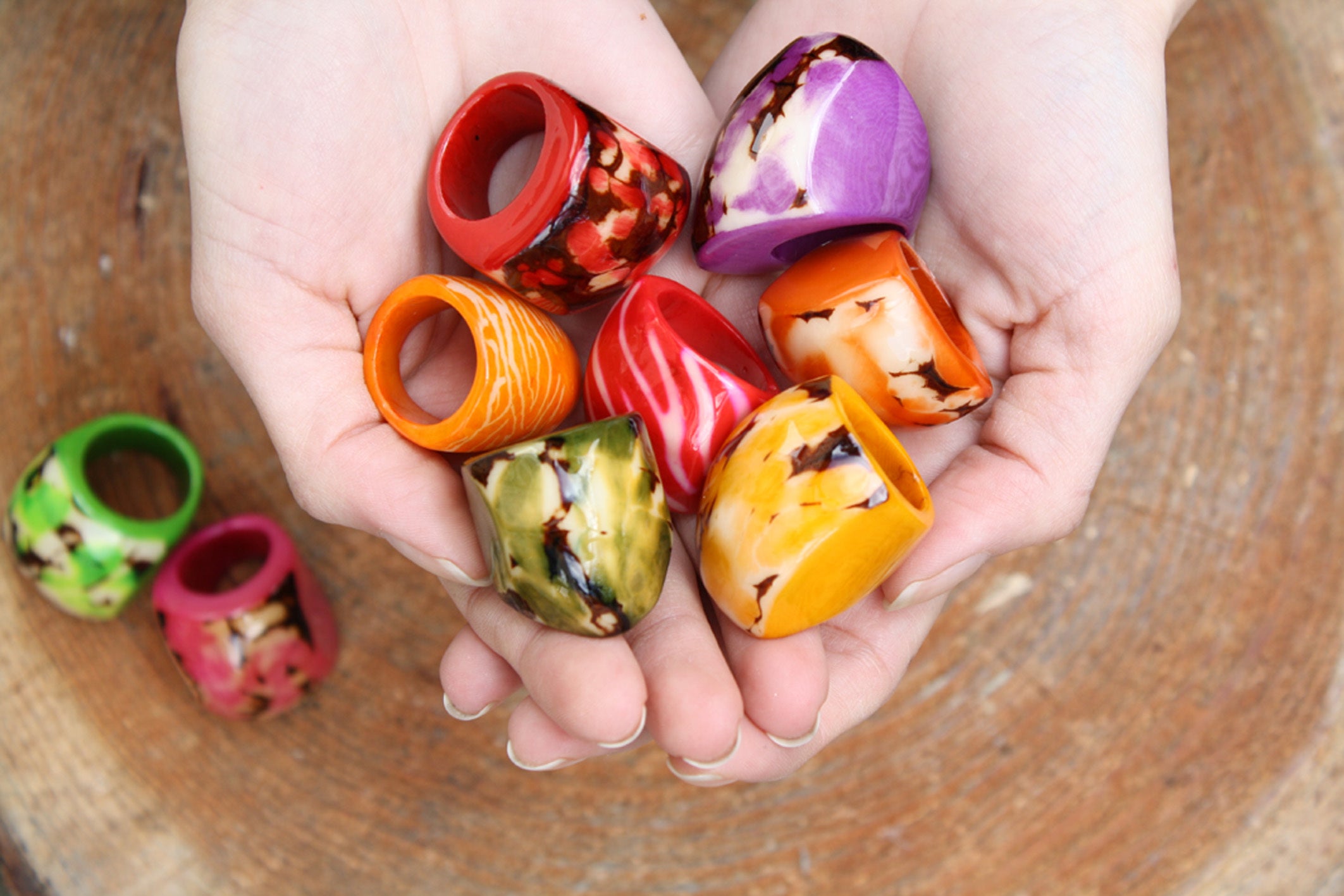Discover our materials

Tagua
Tagua is generally called either ‘vegetable ivory’ or ‘ivory nut’ in English. The Tagua palm tree grows in the tropical and humid environments in the north west of South America and its fruit, which grows several times throughout the year, are seedpods containing clusters of seeds. These seeds are collected and dried over a number of weeks so that they harden into a strong and durable material with a natural colour and texture similar to ivory. Tagua is a wonderful and versatile material that can be carved and sculpted into a wide range of designs. It was treasured by the indigenous as a material with a natural energy, bringing the wearer love from family and friends and harmony with the surrounding world and.

Totumo
The Totumo tree is small and grows in the tropical climates of Central and northern South America. The spherical fruits of the Totumo tree can vary in size, but generally when fully grown will vary from 12 to 30cm in diameter, contain many seeds and a white pulp. The seeds can be ground and mixed with water to make a refreshing drink and the pulp can be cooked and used as an effective remedy for respiratory diseases. For centuries the lightweight, hard and woody shell of the fruit once dried and cleaned has been used to make instruments, such as maracas, handicrafts and utensils to hold foods and liquids. We use this shell in some of our jewellery for its lightweight, but hardwearing properties.

Caña Flecha
For generations the indigenous in the Caribbean region of Colombia wove cane leaves (caña flecha in Spanish) to make a hat, now a national symbol of Colombia. The process of preparing the material involves picking and drying the cane leaves and then removing the veins in strips of approximately equal thickness. These strips are left out in the sun to bleach with those that turn white being saved for weaving. The strips that turn beige are buried in a black mud and after a few days are removed, washed and boiled with another plant from the same area. This process is repeated until they turn black in colour and then the two coloured strips are hand woven to make the material used in our bags.
